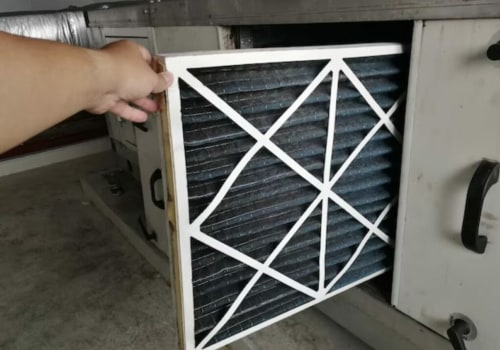When it comes to air conditioning systems, there are two main types of filters: standard and electrostatic. Standard filters work by capturing particles suspended in the pleated medium when the air conditioning system draws in air. On the other hand, electrostatic filters use static electricity to give contaminants a static charge when they enter the filter. Once this charge is released, the particles are trapped.
In areas with high air pollution, an air filter with quality components can make a huge difference between a healthy and an unhealthy living environment. If your family doesn't have any respiratory illnesses, you're a practicing homeowner and you don't mind cleaning the filter, an electrostatic air filter can save you money and still keep your home clean. While indoor air quality (IAQ) is concerning, there are many things you can do to ensure that the air you breathe is as clean as possible. As mentioned before, choosing an electrostatic air filter is a matter of personal preference, but to help you better determine whether or not it's the right choice for you, we've outlined some pros and cons below.
How Does an Electrostatic Filter Work?
The air is cleaned just before the air conditioner draws it through a fan and then circulates it through the ducts.The Centers for Disease Control and Prevention (CDC) recommends improving air filters and purifiers to improve environmental quality and combat COVID-19, especially for people with respiratory diseases. Air filters rated as low as 1 to 4 are suitable for filtering basic dust, but air filters rated between 5 and 8 are ideal for most residential homes. According to the Environmental Protection Agency (EPA), “Inadequate ventilation can increase indoor pollutant levels by not introducing enough outdoor air to dilute emissions from indoor sources and by not transporting indoor air pollutants out of the area. Electrostatic air filters, also known as washable filters or reusable filters, are found in an oven and usually replace pleated filters. The carbon filter is used to remove remaining impurities, allowing fresh, clean air to enter your home.
Air purifiers and some filters, such as HEPA filters, can help combat other causes or respiratory problems and increase air quality in the home, but standard filters and purifiers cannot capture or destroy viruses, they are simply too small.
What Are The Benefits of Electrostatic Filters?
Not all filters are made the same way, and quality does matter, especially when buying an air filter. If you want to save money, time, and the hassle of filtering the air in your home's air conditioning system, but don't mind paying a little more in advance, an Electrostatic Filter might be the best option for you. Read on for a complete guide to HVAC air filters that will answer all your questions, or watch a short video to learn how air filters work. When it comes down to it, deciding between an electrostatic filter or a standard 14x18x1 filter is a matter of personal preference. Electrostatic filters are more expensive than standard ones but require less maintenance over time.They also provide better filtration than standard filters because they use static electricity to capture particles that would otherwise pass through standard filters. However, if you're looking for something more affordable that still provides good filtration capabilities, then a standard 14x18x1 filter may be the better option for you.







